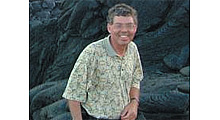
Doug Lung
While TV white space deployments have been successful in rural areas of the United States, I've seen little evidence of use of trials in large urban areas. As previously reported, Ofcom, the U.K. telecom regulator, has launched an extensive trial of white space devices through Britain that includes urban as well as rural areas. Japan's National Institute of Information and Communications Technology (NICT) conducted the white space trials in central London.
NICT's system included use of an Ofcom-approved database to control spectrum access and prevent interference to wireless microphones (referred to as “programme making and special events (PMSE) users) and broadcast TV.
White space operations in central London are challenged by the nearby high-power Crystal Palace TV transmitter site and numerous PMSE users. NICT said it was able to successfully establish a 3.7 kilometer link between Denmark Hill and a site near London Bridge. A system throughput of more than 2 Mbps over the link was achieved using a maximum transmission power of 36 dBm (EIRP) based on the operational parameters provided by the database.
Details on the trial are available at the NICT website Trials of TV White Space Communications at 40 Mbps in Central London. (Note that while the title says “40 Mbps” that was not the throughput obtained with the 802.11af link over the 3.7 kilometer. The 40 Mbps link used LTE for broadband mobile communications was likely tested at much lower power over much shorter distances.)
The NICT webpage explains: “The LTE-based system has also achieved more than 40 Mbps throughput (downlink) when operated in FDD mode by using 20 MHz bandwidth of three consecutive channels. Regarding the backhaul communications system between two fixed points located in central London which are separated by 3.7 km, the system has achieved more than 2 Mbps throughput at maximum transmission power 36 dBm (EIRP) based on the operational parameters provided by the database.”
In addition to the data parameters, the figure on the NICT webpage describes the link used for the 3.7 km 802.11af test, including photos of test sites.
Could such an experiment be done in the United States?
Using Google's spectrum database browser I didn't see any channels available in New York or Los Angeles, but the database shows that some VHF channels are available in other large markets. It would be interesting to see the results from a similar test in a large U.S. market.
The professional video industry's #1 source for news, trends and product and tech information. Sign up below.

Doug Lung is one of America's foremost authorities on broadcast RF technology. As vice president of Broadcast Technology for NBCUniversal Local, H. Douglas Lung leads NBC and Telemundo-owned stations’ RF and transmission affairs, including microwave, radars, satellite uplinks, and FCC technical filings. Beginning his career in 1976 at KSCI in Los Angeles, Lung has nearly 50 years of experience in broadcast television engineering. Beginning in 1985, he led the engineering department for what was to become the Telemundo network and station group, assisting in the design, construction and installation of the company’s broadcast and cable facilities. Other projects include work on the launch of Hawaii’s first UHF TV station, the rollout and testing of the ATSC mobile-handheld standard, and software development related to the incentive auction TV spectrum repack. A longtime columnist for TV Technology, Doug is also a regular contributor to IEEE Broadcast Technology. He is the recipient of the 2023 NAB Television Engineering Award. He also received a Tech Leadership Award from TV Tech publisher Future plc in 2021 and is a member of the IEEE Broadcast Technology Society and the Society of Broadcast Engineers.
